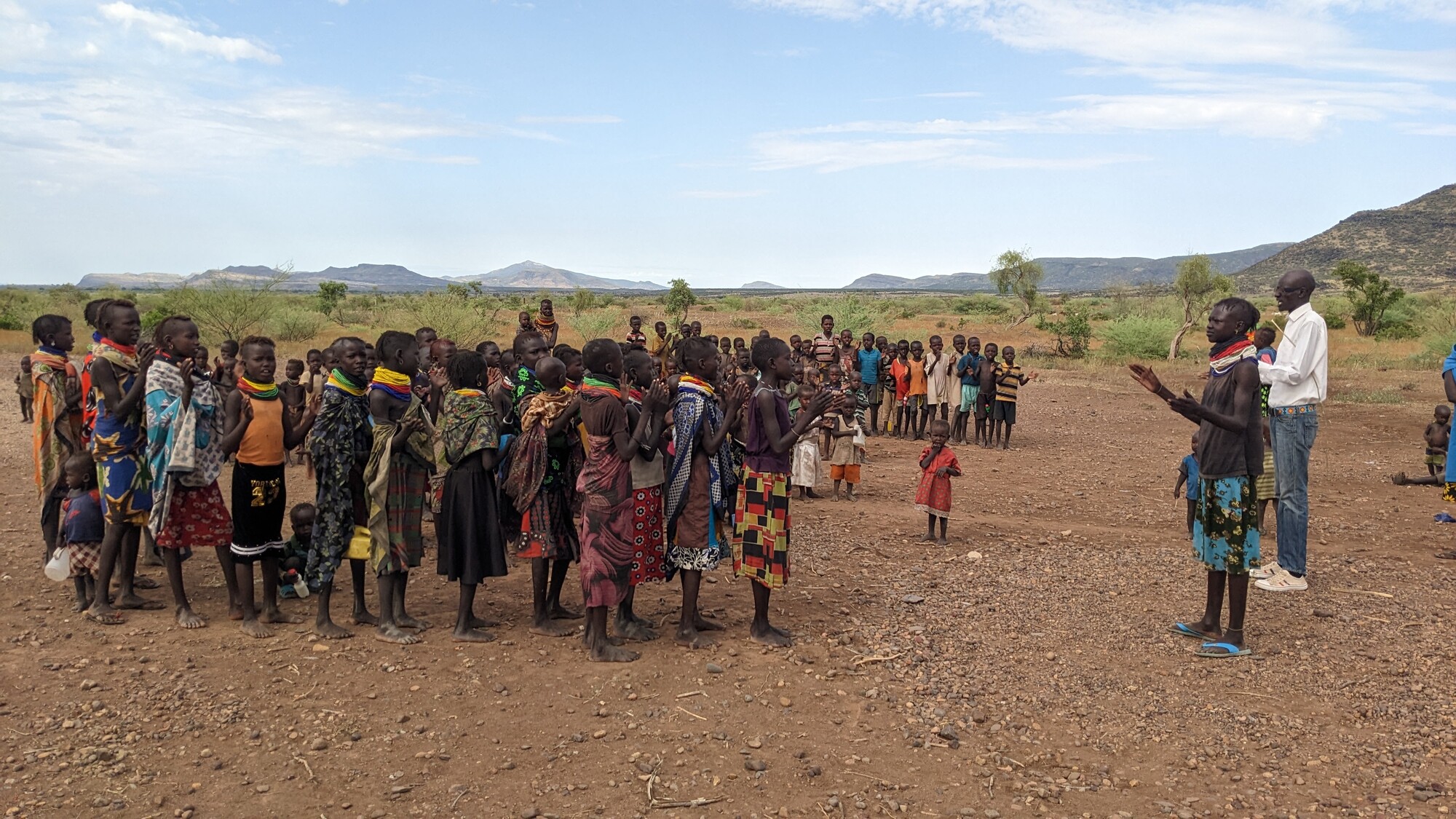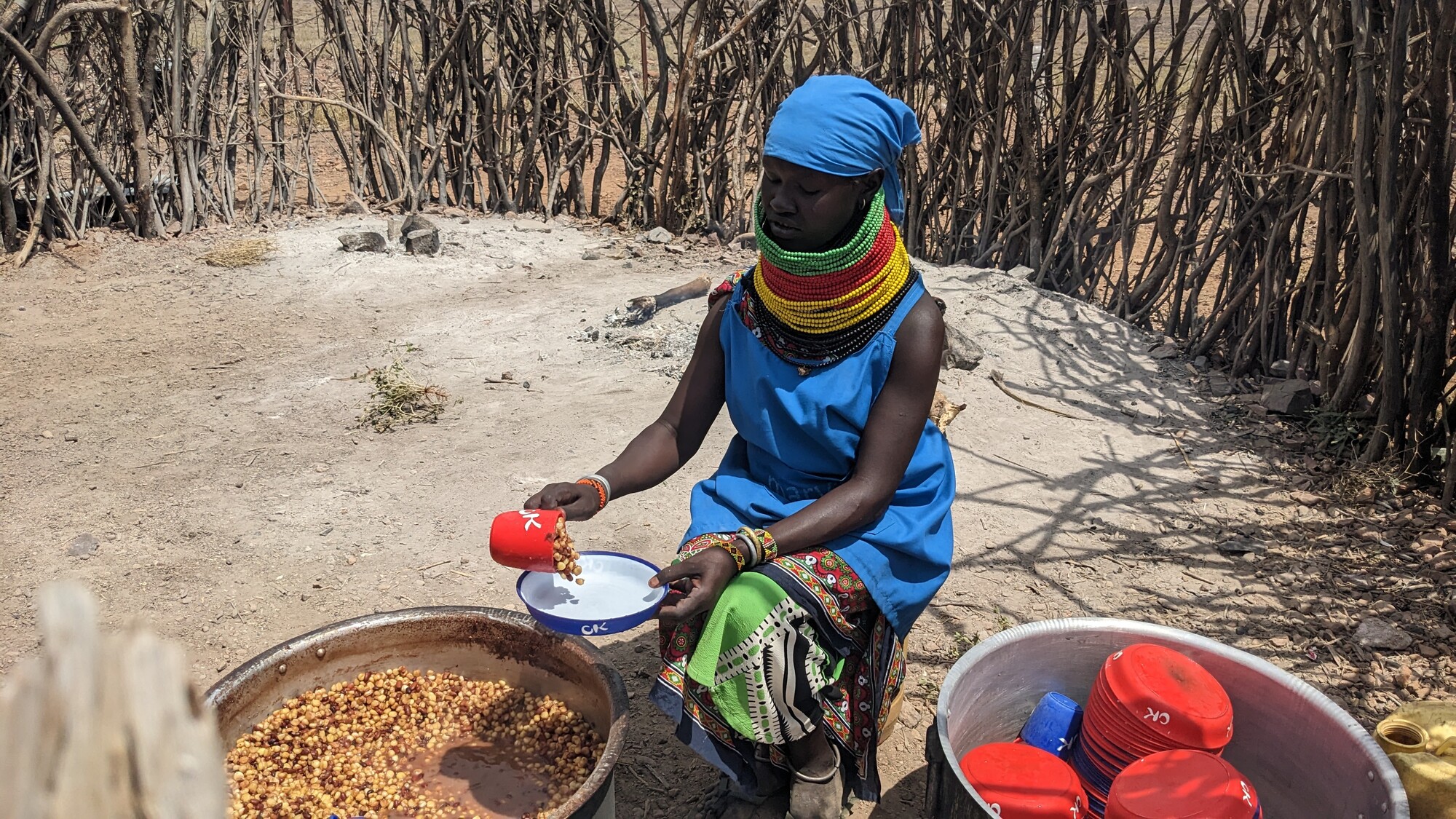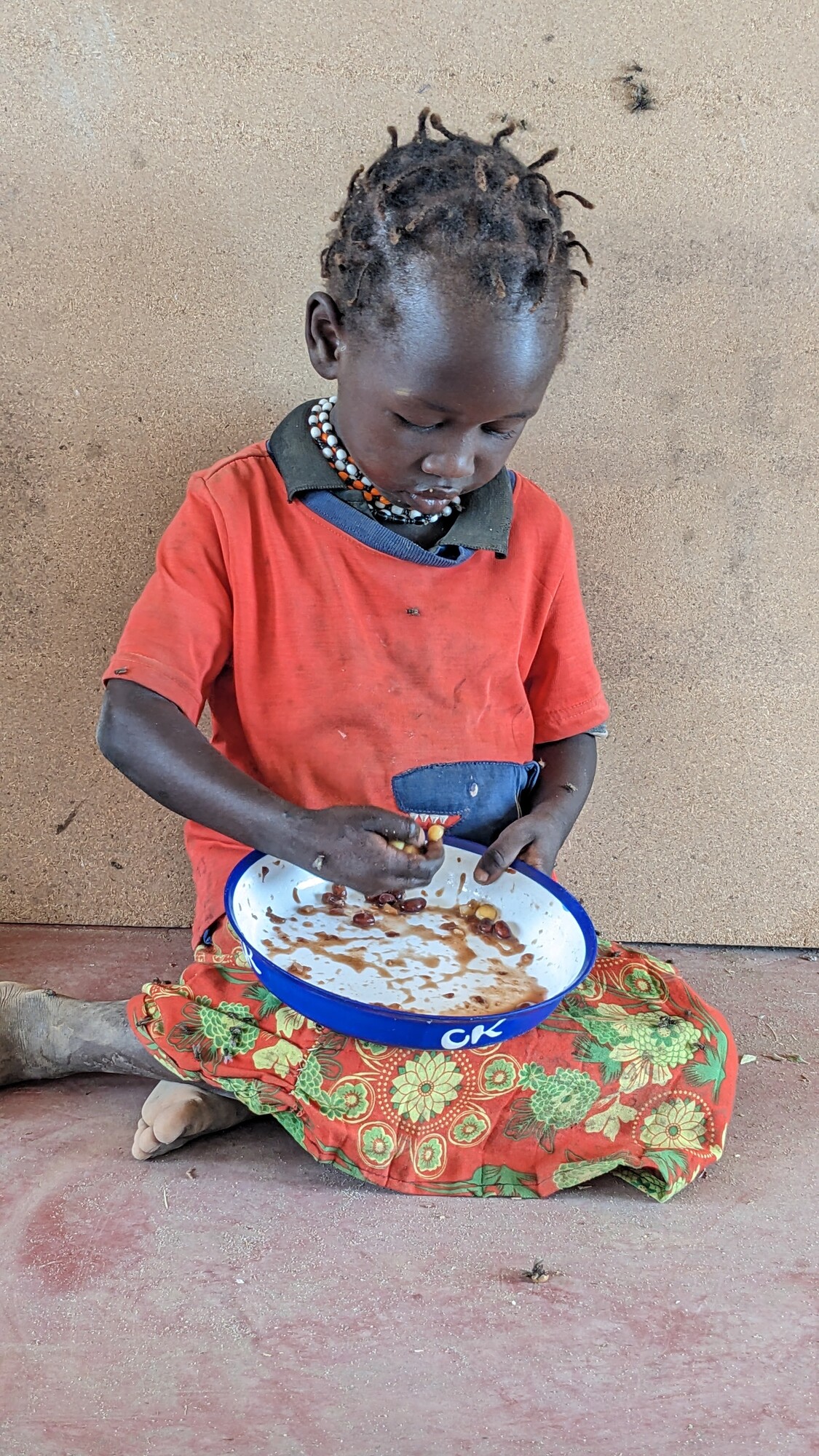A school community thrives despite all the odds
Mary’s Meals’ Director of Programme Partners and Affiliates, Alex Keay, documents his trip to an isolated pre-school in northern Turkana in Kenya, one of the most arid regions of the world where people struggle to find enough food – or water – for their families and livestock. In this vast, parched area, children from miles around walk to the centre in anticipation of a daily meal.
Driving along the winding sandy and stony tracks of northwest Turkana, an extremely remote part of one of Kenya’s most vulnerable regions, it’s hard not to feel like you are wasting your time when your main aim is to visit schools and early childhood development and education centres (ECDEs). As far as the eye can see, steep dunes and rocky mounds dominate the landscape. There is little sign of life other than a few clusters of scrub and occasional groups of goats and camels nibbling on shrivelled leaves.
This north-westerly area, which borders Ethiopia and South Sudan, is sparsely populated by seminomadic peoples. Challenges driven by historic drought, climate change and competition for land use have forced communities to change how they live and operate. Many struggle to have enough food to eat and are uncertain about what the future holds for them and their families.

My colleagues and I are visiting Akalaliot ECDE, where around 300 children receive Mary’s Meals every school day, and this morning it’s a hive of activity. Centres such as Akalaliot are a vital first step for children to gain an education that can enable them to support themselves, their families and their communities in the future. As I enter the centre’s playground, I pause to take in my surroundings. I am immediately struck by the number of children in front of me, attending a place of education in an area where, for several miles, there are no buildings or dwellings in sight. As I scan the horizon, all I can see is parched terrain, interrupted only by the silhouettes of a few plodding camels.
“Where has everyone come from?” we ask. The locals tell us that Akalaliot ECDE is situated between a few small villages, roughly two to three miles away. For those living on the other side of the mountains, however, it’s a five or six-mile walk. Every morning, parents – mostly mothers – bring their children to the centre, carrying as much water as they can since it is not possible to have a functioning well at the centre, despite the community’s best efforts. Children also collect sticks for firewood along the way.

We are told that the nutritious steaming meal of maize and beans is the reason they come. And when we ask about the importance of the meals the children receive as they learn, we are told: “no smoke, no school”; if there is no smoke rising from the centre’s kitchen in the morning, children will not attend.
 Sadly, malnutrition is all too common in these communities. Drought has been killing their livestock, their main source of income, and forcing them to depend on others for their basic needs. But with the provision of nutritious school meals at centres such as Akalaliot, more and more children are attending lessons – and are doing so consistently. They’re even building new classrooms here to keep up with the increased number of pupils since Mary’s Meals began providing meals.
Sadly, malnutrition is all too common in these communities. Drought has been killing their livestock, their main source of income, and forcing them to depend on others for their basic needs. But with the provision of nutritious school meals at centres such as Akalaliot, more and more children are attending lessons – and are doing so consistently. They’re even building new classrooms here to keep up with the increased number of pupils since Mary’s Meals began providing meals.
As I watch the children finish their meal and bounce to their feet with renewed energy, it’s hard not to be amazed by their resilience and, like children the world over, their sense of cheeky fun. One of them is laughing at me hysterically and pointing at my foot. I look down to see that of course, I’ve stood in camel poo!
Just $31.70 feeds a child for a whole school year.